This article was medically reviewed by Lacy Windham, MD. Lacy Windham, MD, is a Board-Certified Obstetrician & Gynecologist in Cleveland, Tennessee. Dr. Windham attended medical school at the University of Tennessee Health Science Center in Memphis. Her residency was completed at Eastern Virginia Medical School in Norfolk, Virginia. She was the recipient of multiple awards during her residency training, including Most Outstanding Resident in Maternal Fetal Medicine, Most Outstanding Resident in Oncology, Most Outstanding Resident Overall, and Special Award in Minimally Invasive Surgery.
There are 11 references cited in this article, which can be found at the bottom of the page.
wikiHow marks an article as reader-approved once it receives enough positive feedback. In this case, 93% of readers who voted found the article helpful, earning it our reader-approved status.
This article has been viewed 432,484 times.
Round ligament pain is a common, although painful, complaint of women who are pregnant. It typically begins in the second trimester of pregnancy as the uterus grows. The round ligaments in the uterus stretch, becoming thin and taut like stretched-out rubber bands, to provide support for the expanding uterus.[1] At times, the ligament contracts, or spasms, on its own, resulting in moderate to severe episodes of pain. There are things that you can do to minimize the round ligament pain and discomfort during your pregnancy.
Steps
Managing Round Ligament Pain
-
1Have your doctor diagnose the pain. Any sudden onset of pain should be checked out as soon as possible by your OB/GYN to determine the cause. Pain in the lower abdominal area could be the sign of something more severe, including appendicitis or even preterm labor. Don't just assume that you have round ligament pain.[2]
- See a doctor immediately if you have pain and also fever, chills, pain when urinating, bleeding, or pain that is more than "moderate".
-
2Change positions. If you are standing when the pain begins, then sit down. If you are sitting, then get up and walk. Bending over, stretching, and lying down are ways to change your position to stop the round ligament pain.[3]Advertisement
-
3Lie down on the side opposite to where you feel the pain. Round ligament pain can be felt on either side, but most women feel the greatest discomfort on their right side. Lying down on the opposite side where the pain is occurring helps to relieve the pressure and stop the pain.[4]
-
4Move slowly. Jumping up quickly from a sitting, lying down, or resting position, can cause the ligaments to contract, resulting in sudden pain. Move slowly when changing positions to help prevent the already stretched ligament from cramping, going into a spasm, or contracting, causing the pain to occur.[5]
-
5
-
6Get plenty of rest. Resting is one of the primary measures to reduce the pain associated with the stretching of the round ligament.[7]
-
7Apply heat to the area. Excessive heat is not healthy for your baby. However, applying some heat can help to relax the round ligament and relieve the pain. Do not use a heating pad on your belly when you are pregnant, but there are some other techniques you can use:[8]
- A warm bath can be very relaxing, and help ease the pain caused by the round ligaments as they stretch to support the growing uterus.
- A warm (not hot) compress on the side of the pelvis where the round ligament pain is occurring may help relieve pain and discomfort as well.
- Soaking in the tub, or even a warm swimming pool, also helps to relieve the pain by lightening the load, as the water provides buoyancy.
- However, you should avoid hot tubs and jacuzzis, since they can raise your body temperature to unsafe levels for your baby.
-
8Massage the tender area. Prenatal massage can bring relief to common pregnancy discomforts such as round ligament pain. Consult with your doctor or a licensed prenatal massage therapist to safely perform the massage. Rubbing or very gently massaging the area can help to relieve the pain, and to help the mother relax.[9]
- Make sure that you find a certified prenatal massage therapist. Regular massage therapy techniques are often unsafe for the developing baby because they use too much pressure. The American Massage Therapy Association has a "Find a Massage Therapist" feature that will allow you to search for certified prenatal massage therapists.
-
9Take an over-the-counter pain medication. Using an over the counter pain medication that is safe for use during pregnancy, such as acetaminophen, can help alleviate the pain as well. Be sure to ask your doctor about taking any medications, including acetaminophen, during your pregnancy.[10]
- Do not take ibuprofen during pregnancy unless it is recommended by your OB/GYN (which is unlikely). NSAIDs like ibuprofen (Advil) and naproxen (Aleve) are not usually safe during the first two trimesters, and are almost never safe to use during the third trimester.[11]
Preventing Round Ligament Pain
-
1Include stretching exercises as part of your daily routine. For your safety, and to protect your baby, talk to your doctor when you're considering adding any form of exercise.[12]
- A commonly recommended stretching exercise is done by kneeling on your hands and knees on the floor. Then lower your head to the floor, and keep your rear raised in the air.
- Pelvic tilts, hip hikers, and kneeling exercises may also be helpful.
-
2Learn about yoga during pregnancy. Certain yoga moves are recommended to help with round ligament pain.[13] Two commonly recommended poses are the cat cow pose and the savasana pose.
- To do the cat cow pose, kneel on all fours with fingers spread wide and pointing forward. Inhale and round the back high, letting the head fall and curling your pelvis under. Exhale, pulling the belly towards the mat, and extending the back body wide to stretch the ligament. Repeat several rounds.
- The savasana position in often the final relaxation pose in yoga sequences. To do this pose, curl into a fetal position with your arm extended to support the head, or use a pillow. This move is practiced on your left side while pregnant, with a pillow in between the legs to relieve pressure from the lower back.
-
3Use pillows. Placing a pillow between the knees and under the belly when lying down and/or sleeping can help relieve pressure from the ligaments. The pillow between the knees helps with added comfort.[14]
-
4Avoid sitting or standing for long periods of time. Sitting or standing for long amounts of time without breaks can put extra pressure on the growing and stretching ligaments. If a job or class demands extended amounts of standing or sitting, try to take as many breaks as possible and rest.[15]
- Take steps that work for you to be more comfortable while sitting. If possible, use an adjustable chair as you progress through your pregnancy, and try to avoid crossing your legs while sitting.
- Consider using a pillow or cushion, that conforms to your body, to provide support for your lower back, and helps you to maintain good posture.
-
5Pay attention to your posture. Try to avoid locking your knees and allowing your hips to lean forward. Plus, if the arch in your lower back is increasing a lot, you may be more likely to suffer from round ligament pain.[16]
-
6Drink plenty of fluids. Staying well hydrated during your pregnancy helps to keep your body healthy, including stretching ligaments and muscles. Adequate fluid intake also helps to avoid unwanted problems such as constipation, and bladder infections.[17]
-
7Use pelvic support aids. Maternity belts, or abdominal support garments, are worn under the clothing and are not visible. Pregnancy support bands or belts help to lift the uterus, hips, and ligaments, and provide support for the back.[18]
-
8Work with a physical therapist. Physical therapy during pregnancy can also help to relieve round ligament pain. Physical therapists have extensive knowledge of your musculoskeletal system and can recommend exercises and stretches that are appropriate and safe to do while pregnant.[19]
Seeking Medical Attention
-
1Contact your doctor with any sudden onset of pain. If your round ligament pain is accompanied by vaginal discharge or bleeding, your doctor needs to know as soon as possible. Also contact your doctor immediately if you see any of the following:[20]
- Pain that lasts more than a few seconds
- New symptoms like low back pain, fever, chills, faintness, and nausea and vomiting beyond the first trimester
-
2Talk to your doctor if your pain persists. Constant pain or pressure, pain or discomfort when walking, pain when urinating, and increased pressure in your pelvic region can be warning signs of something more serious that just round ligament pain. Contact your doctor as soon as possible if you experience these symptoms.[21]
-
3Avoid confusing round ligament pain with actual labor. Labor pain does not typically occur until the third trimester. Round ligament pain begins during the second trimester, as the uterus begins to grow and expand.[22]
- Round ligament pain can be confused with Braxton-Hicks contractions. While this form of contraction can begin during the second trimester, a Braxton-Hicks contraction is not painful.
References
- ↑ https://my.clevelandclinic.org/health/symptoms/21642-round-ligament-pain
- ↑ https://myhealth.alberta.ca/Health/aftercareinformation/pages/conditions.aspx?hwid=ace3318
- ↑ https://americanpregnancy.org/healthy-pregnancy/pregnancy-complications/round-ligament-pain-during-pregnancy/
- ↑ https://my.clevelandclinic.org/health/articles/5186-pregnancy-having-a-healthy-pregnancy
- ↑ http://americanpregnancy.org/pregnancy-health/round-ligament-pain-during-pregnancy/
- ↑ http://americanpregnancy.org/pregnancy-health/round-ligament-pain-during-pregnancy/
- ↑ https://my.clevelandclinic.org/health/articles/5186-pregnancy-having-a-healthy-pregnancy
- ↑ https://my.clevelandclinic.org/health/articles/5186-pregnancy-having-a-healthy-pregnancy
- ↑ https://americanpregnancy.org/healthy-pregnancy/is-it-safe/prenatal-massage/
- ↑ https://myhealth.alberta.ca/Health/aftercareinformation/pages/conditions.aspx?hwid=ace3318
- ↑ https://utswmed.org/medblog/nsaid-warning-fda-pregnancy/
- ↑ https://my.clevelandclinic.org/health/symptoms/21642-round-ligament-pain
- ↑ https://my.clevelandclinic.org/health/symptoms/21642-round-ligament-pain
- ↑ https://utswmed.org/medblog/tailbone-pain-during-pregnancy/
- ↑ https://my.clevelandclinic.org/health/symptoms/21642-round-ligament-pain
- ↑ https://www2.hse.ie/conditions/round-ligament-pain-pregnancy/
- ↑ https://myhealth.alberta.ca/Health/aftercareinformation/pages/conditions.aspx?hwid=abq3222
- ↑ https://my.clevelandclinic.org/health/articles/5186-pregnancy-having-a-healthy-pregnancy
- ↑ https://www.aafp.org/afp/2018/1101/p595.html
- ↑ https://myhealth.alberta.ca/Health/aftercareinformation/pages/conditions.aspx?hwid=abq3222
- ↑ https://myhealth.alberta.ca/Health/aftercareinformation/pages/conditions.aspx?hwid=abq3222
- ↑ https://myhealth.alberta.ca/Health/aftercareinformation/pages/conditions.aspx?hwid=abq3222
About This Article
To avoid round ligament pain, try incorporating stretching exercises into your daily routine, which can help clear lactic acid. You can also try common yoga poses, like the cat cow and savasana, which are particularly useful for round ligament pain. Additionally, try placing a pillow between your knees and underbelly when lying down or sleeping, since this can relieve pressure from your ligaments. You should also avoid sitting or standing for long periods of time as this can put extra pressure on your growing and stretching ligaments. For more tips from our Medical co-author, including how to manage round ligament pain, read on!
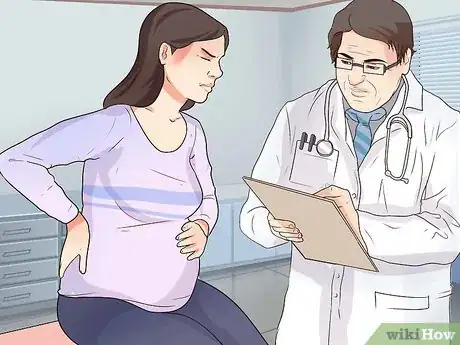
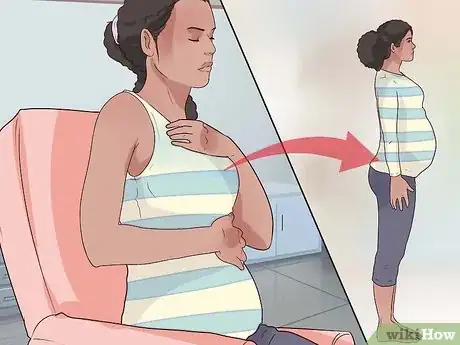
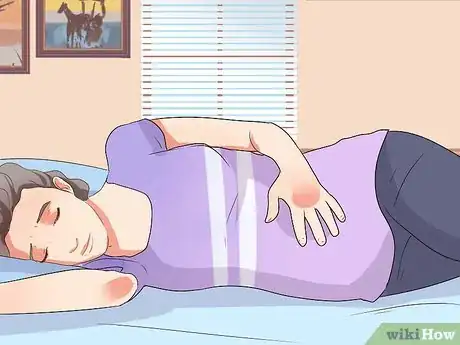
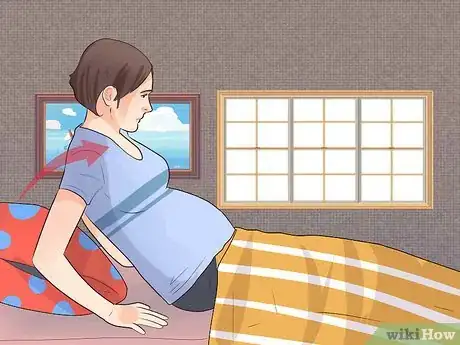



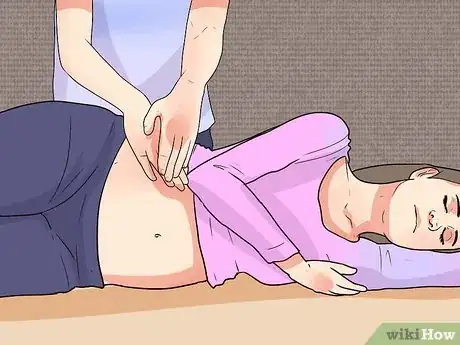

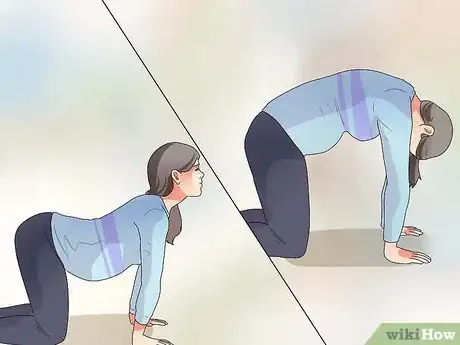
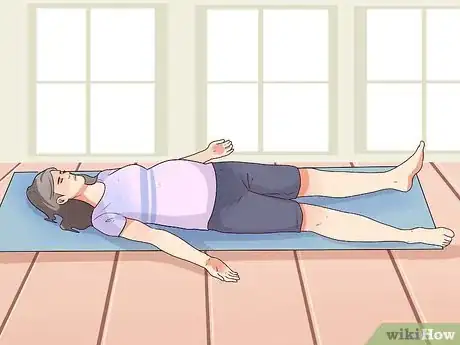
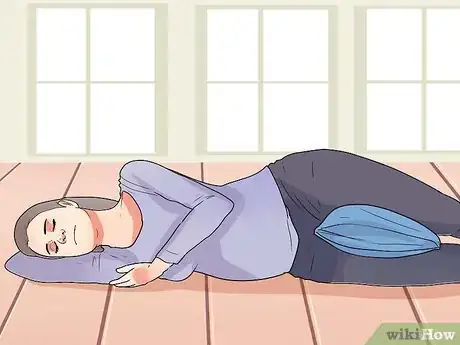
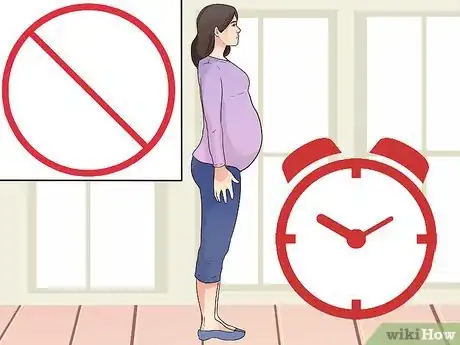
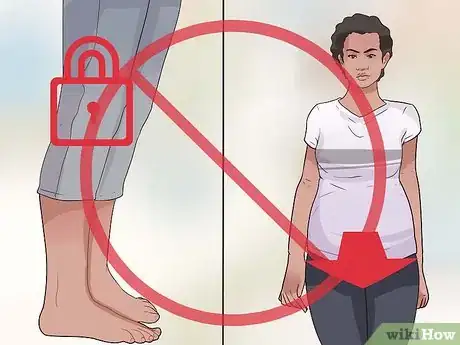



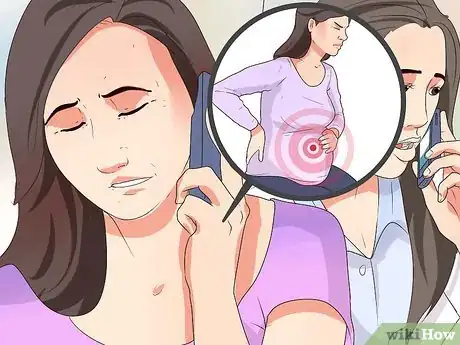
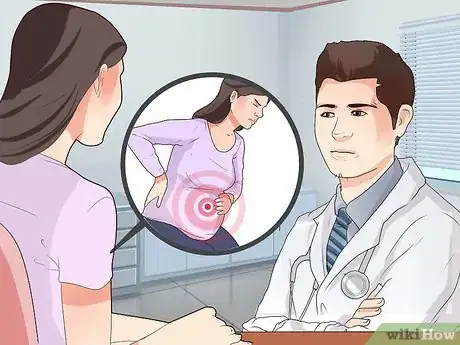




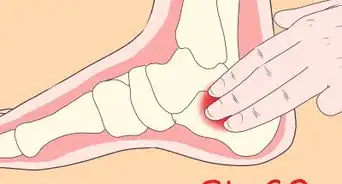









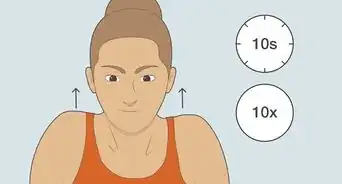












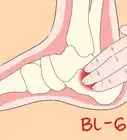




































Medical Disclaimer
The content of this article is not intended to be a substitute for professional medical advice, examination, diagnosis, or treatment. You should always contact your doctor or other qualified healthcare professional before starting, changing, or stopping any kind of health treatment.
Read More...